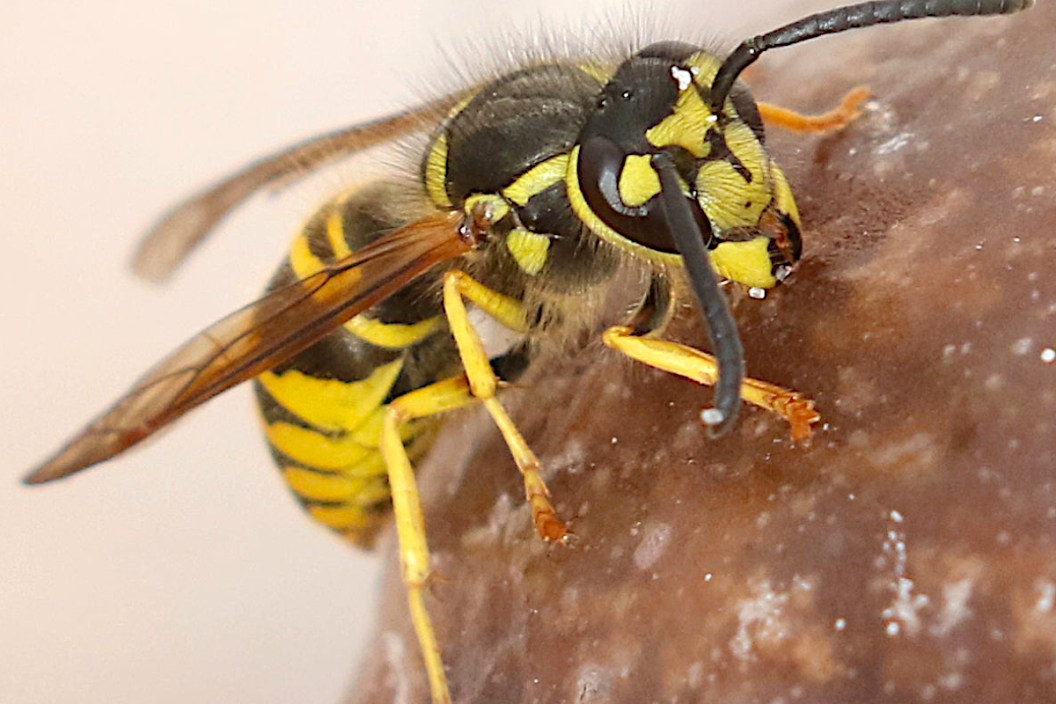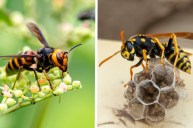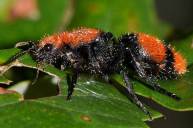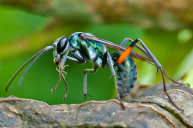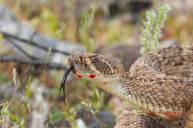The eastern yellowjacket is a highly defensive species that can be dangerous to humans.
When it comes to the insects of North America that most frighten people, the eastern yellowjacket (Vespula maculifrons) is near the top of the list. For good reason too. Anyone who has ever disturbed a yellowjacket nest accidentally can attest to how aggressive these bugs are and the painful stings they can inflict.
In fact, the eastern yellowjacket probably results in more calls to pest control services than any other, especially in the late summer when most nests are at their largest.
By shedding a light on the secretive lives of this extremely large member of the Vespidae family, people can hopefully develop a greater appreciation for their usefulness, and a way to safely remove them if you do encounter a problem nest. We will also tell you what to do if you end up on the business end of their stinger!
What is an eastern yellowjacket?
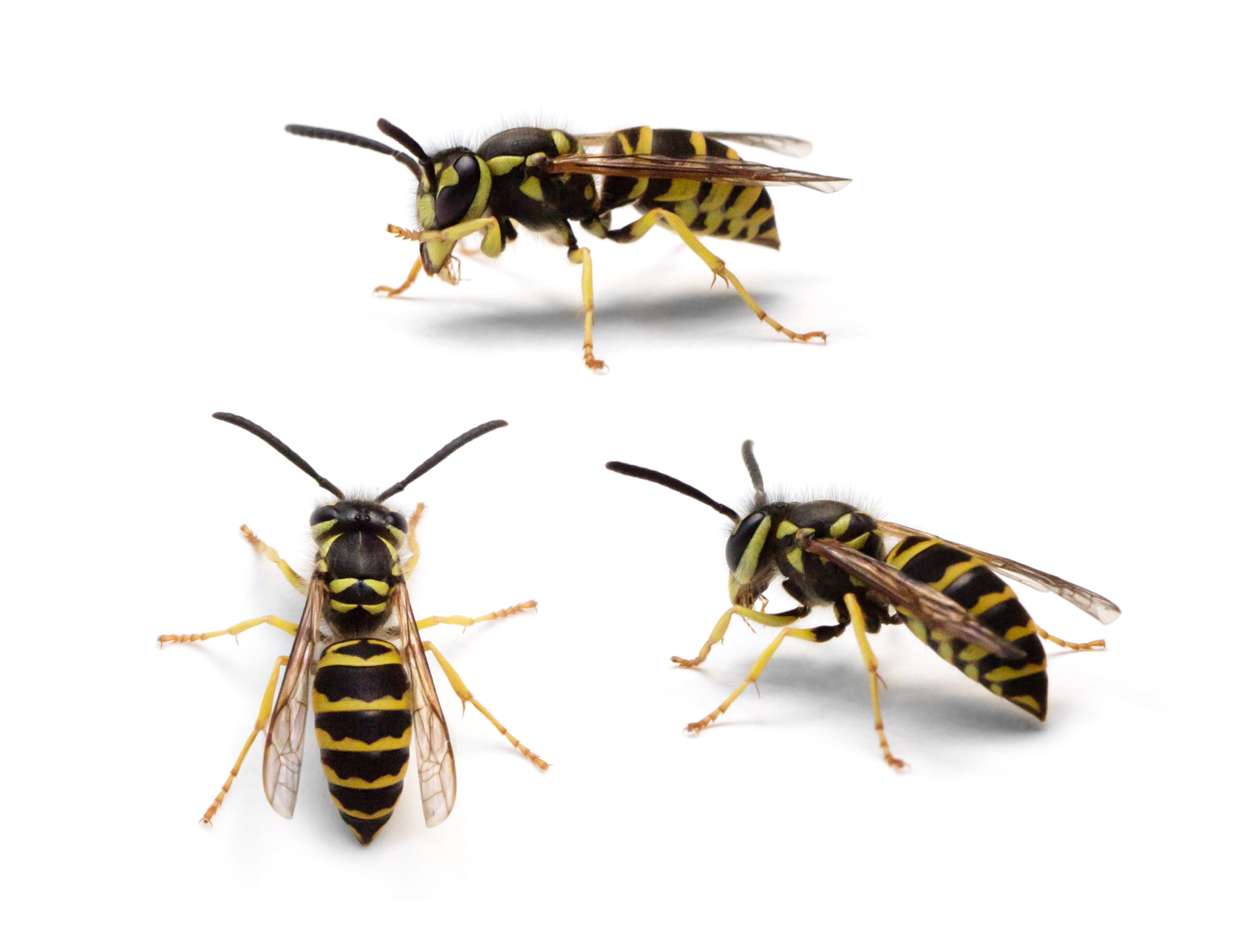
We should probably clarify exactly what species of social wasps we are talking about. After all, there are a few different species of yellowjacket all in the greater hymenoptera order of insects. Some of the different varieties include the southern yellowjacket (Vespula squamosa), the invasive German yellowjacket (Vespula germanica), and the baldfaced hornet (Dolichovespula maculate). Today we are talking about Vespula maculifrons, the eastern yellowjacket. Which, as the name implies, calls eastern North America home for the most part. There are populations as far west as the Texas and Dakota plains. They are also found in parts of Canada and Mexico.
V. maculifrons is a large insect but is one of the smaller forms of yellowjacket. According to Penn State University's Agriculture Department, the typical worker is about half an inch long with the queen being just slightly larger than that. Queens have a distinctive thin line and dot pattern on their abdomen while the workers have a thicker lined pattern with no dots. The black and yellow pattern extends upwards to the head of the insect. The yellow lines around the eyes do not entirely circle them.
The life cycle of the eastern yellowjacket is much like that of other North American wasps. The male's only purpose in life is to mate with the new queens when they emerge in the early part of summer. The newly mated queens usually overwinter somewhere secure before constructing a new nest in the spring. They stay dormant until it gets warm enough to start construction. The queen forages for her own food and cares for the worker larvae until they become large enough to expand and defend the nest for her. We should mention that all the workers are female, although they are sterile and cannot raise young of their own.
What do eastern yellowjackets eat?
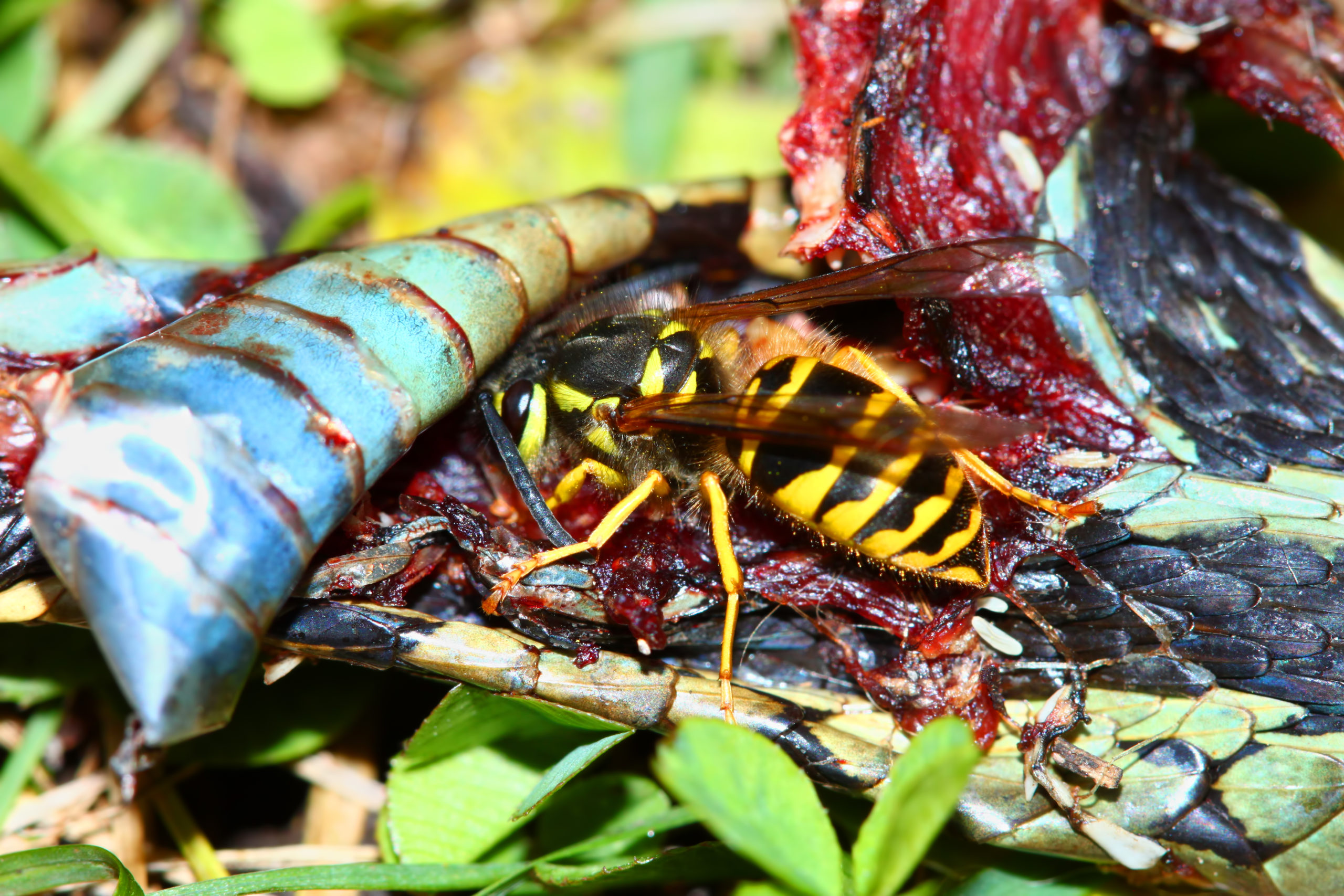
While many people consider them pests, the eastern yellowjacket is more beneficial than you might think. The eastern yellowjacket is a predator that will sometimes kill unwanted arthropods like centipedes and other nasty creepy-crawlies. They will also often eat caterpillar larvae and earwigs.
This species has a varied diet though. They are not above scavenging carrion from dead insects and other bugs. If you have ever seen them buzzing around a dead animal, they are likely feeding. They also sometimes feed on nectar and pollinate plants like honeybees in the process. They enjoy sugar too. Ever had one buzzing around your soda can on a hot summer day? It was likely attracted by the sugar in the drink.
Are eastern yellowjackets aggressive and how dangerous are they?
The eastern yellowjacket is extremely aggressive. Most people have nasty encounters with this bug because it usually builds its nest in a hole in the ground that is not easily noticeable until it is too late. If you are unfortunate enough to disturb one, they will likely follow you for some distance until they call off the attack.
Entomology experts have found there is a reason these insects seem so highly organized. When a worker senses a threat, they release an alarm pheromone into the air that triggers other workers to go on the defense and swarm anything unfortunate enough to disturb the nest be it human or animal.
Yellowjackets venom is perfectly designed by nature to be as painful as possible to humans and animals so they can defend their nests. Most of them are also capable of stinging over and over, worsening the pain. Common symptoms of a sting include redness, swelling, itching, warmth around the sting, and inflammation.
These stings can be extremely dangerous and not just to people with allergies either. If you disturb an extremely large nest, enough can team up on a human to send them into anaphylactic shock. If you feel lightheaded, dizzy, or the stings causing vomiting or problems breathing, it is best to seek out medical attention. An Epi-pen or epinephrine adrenaline injection, or even hospitalization may be needed in extreme cases.
How to deal with a yellowjacket sting.
For most yellowjacket stings, you can easily mitigate the pain with a variety of insect sting remedies found on the Internet like Sting-Kill that bring near immediate relief of the pain and swelling. It pays to have a first aid kit in your vehicle that has insect sting wipes specifically made for this type of situation. An antihistamine will also help with the swelling and itching.
There are lots of other quick remedies when you do not have access to these products though. The simplest solution is to put an ice pack on the sting area. Applying saltwater works well too. As does a water/baking soda mixture. It forms a type of paste that you can easily apply to the area.
Other old home remedies include the use of vinegar or meat tenderizer. It sounds weird but as many sting victims can attest, it usually works. Obviously, these remedies are best only for people not allergic to insect stings and who are not showing obvious signs of the stings being life-threatening.
How do you get rid of yellowjackets?
In most cases, we would recommend you simply not mess around with a yellowjacket nest. However, they sometimes build those underground nests in yards, or around homes. Then they become waiting landmines just waiting for some poor human to wander by and set the nest off. It creates a dangerous situation, especially for young children.
The easiest way to deal with the problem is a commercial insecticide. Just make sure you put on some thick clothing, a type of head covering and gloves before you take on the nest. Many of these products now have sprayers that allow you to hit the nest from further away, keeping yourself out of the line of fire.
It is also a good idea to make your attack on the nest after dark because yellowjackets are much less active during those hours. You can catch them by surprise before they know what hit them.
While sprays are effective, the simplest home remedy for a ground nest is to hit them with some soapy water. Mix some up in a few five-gallon buckets and you can drown out a nest in minutes, rendering the area safe again.
The eastern yellowjacket does sometimes build nests inside human structures and some of the nests can get quite large. For nests in homes, barns, or sheds, we recommend calling in a professional to deal with the problem. Preferably someone with protective equipment because some larger nests might contain hundreds of thousands of angry workers and that can be a dangerous situation to anyone, even if they are not allergic to insect stings.
Products featured on Wide Open Spaces are independently selected by our editors. However, when you buy something through our links, we may earn a commission.
For more outdoor content from Travis Smola, be sure to follow him on Twitter and check out his Geocaching and Outdoors with Travis YouTube channels.
NEXT: THE AXIS DEER AND HOW THEY'RE IMPACTING PARTS OF THE UNITED STATES
WATCH
